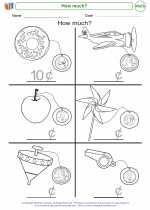Understanding Hours
In the concept of time, an hour is a unit of measure representing a specific length of time. It is commonly used to divide the day into smaller segments for the purpose of scheduling and timekeeping. Understanding hours is an important skill for children as they begin to grasp the concept of time and learn to read and interpret clocks and watches.
Key Points about Hours:
- Definition: An hour is equal to 60 minutes, and there are 24 hours in a day.
- Representation: On a clock, the hour hand makes one full rotation around the clock face every 12 hours.
- AM and PM: The 12-hour clock system uses "AM" (ante meridiem) to indicate the time from midnight to noon, and "PM" (post meridiem) to indicate the time from noon to midnight.
- Reading the Time: When reading the time, the hour hand indicates the current hour, while the minute hand shows the minutes past the hour.
Examples:
For example, if the clock shows the time as 3:00 PM, it means it is 3 hours past noon. If the time is 8:30 AM, it is 30 minutes past 8 in the morning.
Learning Activities:
To help children understand hours, educators and parents can engage in various activities such as:
- Using visual aids like analog clocks to teach reading and interpreting time.
- Practicing counting and skip-counting by hours to reinforce the concept of time measurement.
- Engaging in daily routines and scheduling activities to demonstrate the practical application of hours in daily life.
By mastering the concept of hours, children develop a foundational understanding of time and its measurement, which is crucial for their overall mathematical and practical skills.


